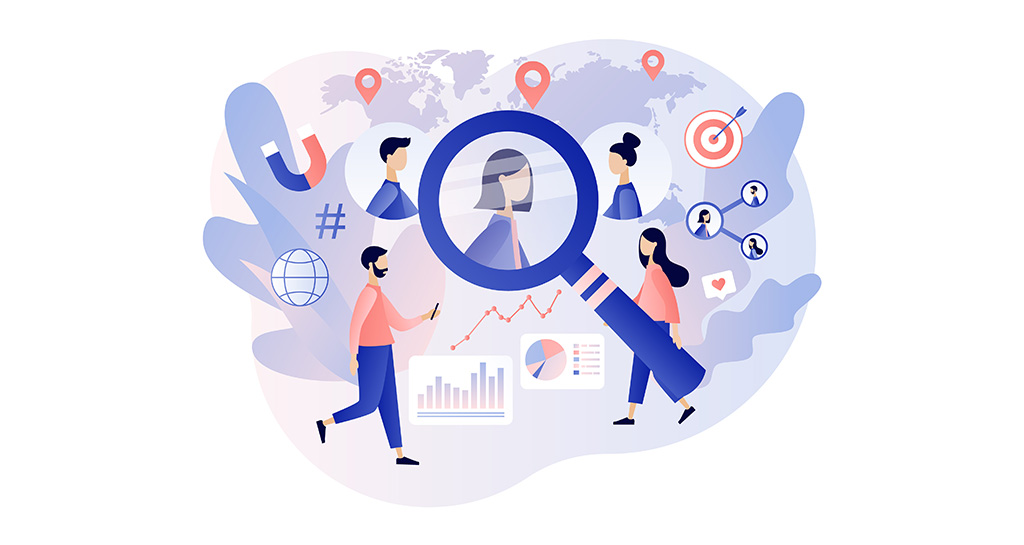
Consumers are bombarded with marketing messages – some relevant, most not. Whether a consumer reacts to seeing an ad, email, social post or marketing deliverable really depends on whether the content is placed in front of them at the right time and place, and speaks to them about something that matters to them on a personal level.
This seems obvious, but for decades, marketers only targeted audiences using minimal information about them – for example, age and gender. Sure that was better than “spray and pray,” but it didn’t allow for the one tactic that really gets people to engage: personalization.
It’s well-known today that personalization works – 80% of consumers are more likely to buy from brands that provide personalized experiences. But personalization done wrong has the opposite effect: 63% of consumers will stop buying from brands that use poor personalization tactics.
How do you make sure to get personalization right? First, you must get really good at segmentation.
What Is Segmentation?
Segmentation is a marketing strategy involving organizing customer and business data by key characteristics. It serves as the bridge between your buyer personas and your backend marketing automation technology, helping you define the abstract view of your prospect into data fields that you can leverage to sort leads into personalized campaigns.
A segmentation framework may vary, depending on the business and type of campaign being developed. Here are five common ways:
- Demographic: Includes factors such as age, gender, occupation, income and education.
- Psychographic: Divides people into groups based on personality, lifestyle, social status, activities, interests, opinions and attitudes.
- Behavioral: Includes information about the customer’s ideal buying journey such as online and offline destinations, and apps used for product research.
- Geographic: Includes information about where people live, work, socialize and travel.
- Firmographic (used primarily in B2B marketing): Includes information about where a target customer works, including industry, number of employees, company size and financials.
By classifying target customers using these categories of characteristics, you can define very specific market segments and begin to understand exactly who your ideal customer really is. You can also use this information to personalize marketing outreach at a very granular level. As you collect more data about your prospects and target audience, you can refine your segments in an iterative manner, to get even closer to meeting their exact needs and expectations.
It’s important to incorporate digital body language and self-selected preferences, such as those collected through a Preference Center into your segmentation framework. Often called “intent data,” this information helps you understand how close your target customer is to making a purchase, which will enable you to send materials or offers that align with their current stage in the buying journey.
Does Segmentation Work?
In a word, yes. Hubspot found that 30% of marketers who use market segmentation techniques to improve email engagement said segmented campaigns had 14.31% higher open rates and 101% more clicks than non-segmented campaigns. What’s more, email marketers who used segmentation reported revenue increases of up to 760%, and 77% of marketing ROI comes from segmented, targeted and triggered campaigns.
Let’s face it: It’s much more efficient and effective to send a highly personalized message to 100 likely buyers than a vague and general message to thousands of people who don’t care about what you’re offering.
Segmentation helps firms understand specific challenges, concerns and preferences of their target customers, which makes crafting effective messages and developing content and creative a lot easier. It helps marketing teams hone their value proposition – and can even help the product team shape their product roadmap.
Effective Segmentation Depends on Data
Before you can implement a segmentation framework that paves the way for personalization and increased engagement, you have to make sure your data is in order. Auditing, deduplicating and normalizing your customer and prospect data will help to ensure your segments map accurately to your buyer personas, and that your customers and prospects are receiving the highly targeted, personalized content you develop just for them.
BDO Digital can help you optimize your data and create a subscription center that enables prospects and customers to self-manage opt-in preferences. Learn more about our Data Services today.
The post Why Segmentation Is Critical to Personalization and Engagement appeared first on DemandGen.





















